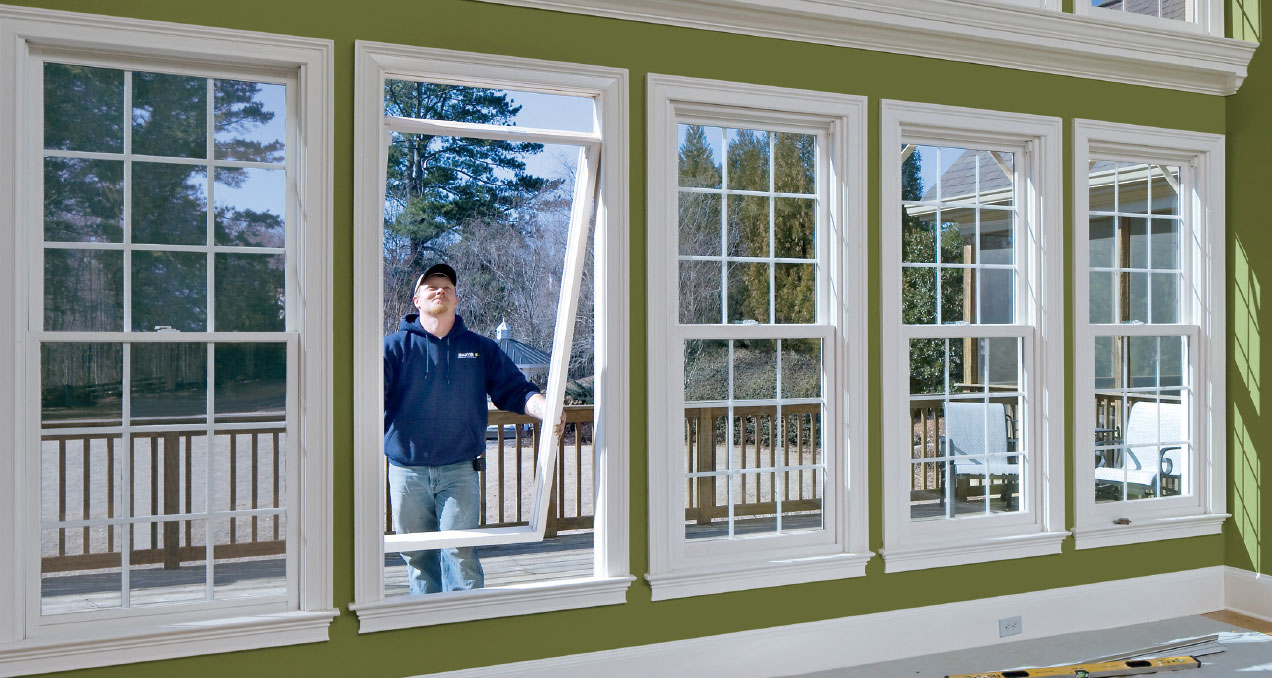
05 Sep Mistakes to Avoid on Your Window Replacement Project
There’s always something new to do in order to maintain your home. Included on that never-ending to-do list is occasionally replacing your windows. On the surface, this task seems relatively straightforward. You just pop out the old window and insert the new window, right? But, as with any project, it’s important to know what you’re up against before diving right in and possibly making an avoidable mistake.

Window & Door Specialist
Meeting Standards
A major mistake to avoid is not being compliant with building codes. Depending on the age of your home, the space your current window occupies may not abide by today’s standards. Today’s requirements dictate a minimum of 5.7 sq. ft. of open-able space in windows in case of an emergency when either you need to be able to climb out, or a fireman with a pack needs to be able to climb in. The window also has to be lower than 44 inches off of the floor.
Breathability
“Air-tight” sounds like a great, desirable characteristic for a window, doesn’t it? Unfortunately, many newer homes were built to be well insulated. The expectation that there will be a bit of air leakage (either in or out) around the original windows. While preventing air leakage could make your home more efficient, moisture needs to escape somehow. If the window frames used to be the answer but are now air-tight, then the moisture will start to settle and linger in the walls and that’s bad news for the wood.
Shortsightedness
Popping out the old window and inserting the new window is the quickest and easiest method. That’s a fact, but only assuming there aren’t underlying issues with the frame. Perhaps you’ll find the wood around the frame is too rotted to ignore or the exterior wood is exposed and hasn’t been well preserved. In these instances, the long-term ramifications of a quick replacement as opposed to a full window and frame re-installation could be quite costly.

The Right Material
There are so many options for windows these days. Don’t get sucked into thinking you need triple insulated glass or the highest sun protection. If you live near us in the Midwest, you actually are in the opposite situation because your home relies on that incoming solar heat. You wouldn’t want to overpay for windows that will also directly cause your heating and cooling costs to increase. Along the same lines of material and heat, you want to avoid certain materials if you live in an area with an inconsistent climate. For example, a vinyl window will expand and contract so many times during a week when the temperature rises and climbs from high 70s in the daytime to low 50s overnight. Worse yet, the expanding and contracting of the vinyl frame is happening at a different rate than the glass in the window. Eventually, that glass will have a stress crack or a seal failure (when you get a layer of fog between the panes of glass).

